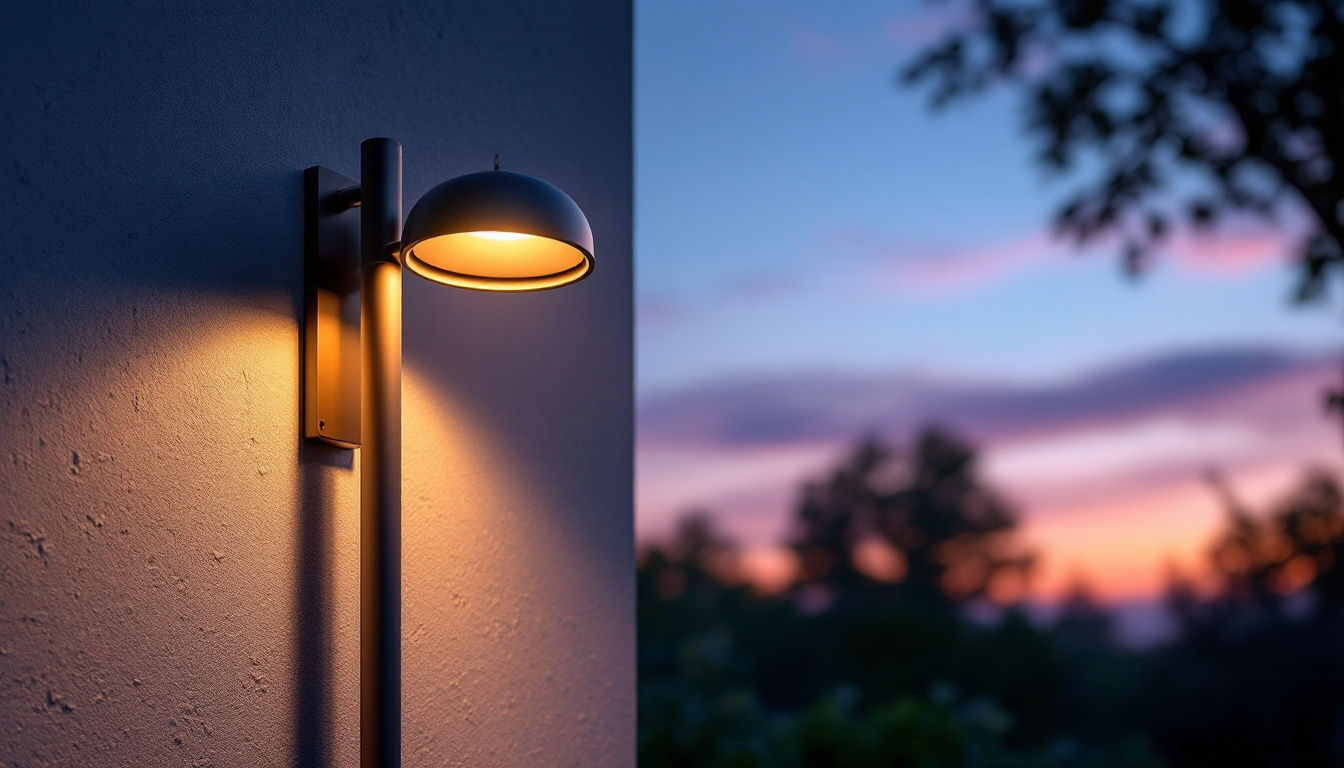
As the demand for energy-efficient lighting solutions continues to rise, LED bulbs have become a popular choice for recessed lighting installations. For lighting contractors, understanding the nuances of LED technology and its application in recessed fixtures is essential for delivering high-quality results to clients. This article explores best practices for selecting, installing, and maintaining LED bulbs in recessed lighting, ensuring optimal performance and customer satisfaction.
Before diving into best practices, it is crucial for lighting contractors to grasp the fundamentals of LED technology. Unlike traditional incandescent or fluorescent bulbs, LEDs (Light Emitting Diodes) operate differently, offering several advantages that make them ideal for recessed lighting.
One of the most significant benefits of LED bulbs is their energy efficiency. LEDs consume significantly less power compared to incandescent bulbs, which translates to lower electricity bills for clients. This efficiency is particularly advantageous in recessed lighting applications, where multiple fixtures may be installed in a single area.
Moreover, LEDs have a longer lifespan, often lasting up to 25,000 hours or more. This longevity reduces the frequency of replacements, making them a cost-effective option in the long run. Contractors can emphasize these benefits to clients, highlighting the potential savings on energy and maintenance costs. Additionally, the reduced heat output of LEDs compared to traditional bulbs means that they contribute less to cooling costs in warmer months, further enhancing their appeal in energy-conscious environments.
Another critical aspect of LED technology is the range of color temperatures available. LEDs can emit light in various shades, from warm white to cool daylight. Understanding color temperature is vital for lighting contractors, as it affects the ambiance and functionality of a space.
When selecting LED bulbs for recessed lighting, consider the intended use of the area. For instance, warm white (around 2700K) is often preferred for residential settings, creating a cozy atmosphere. In contrast, cooler temperatures (5000K and above) may be more suitable for commercial spaces requiring bright, task-oriented lighting. Furthermore, the color rendering index (CRI) of LEDs is another important factor; a higher CRI means colors appear more vibrant and true to life, which is essential in spaces like art galleries or retail stores where accurate color representation is crucial. By understanding these nuances, contractors can make informed recommendations that enhance the overall aesthetic and functionality of their clients’ spaces.
Choosing the appropriate LED bulbs for recessed lighting involves several considerations. Contractors must assess factors such as brightness, beam angle, and compatibility with existing fixtures.
Brightness is measured in lumens, and understanding this measurement is crucial for selecting the right LED bulbs. Unlike watts, which measure energy consumption, lumens indicate the amount of light produced. When recommending LED options, contractors should aim for a balance between energy efficiency and adequate illumination.
For recessed lighting, a general rule of thumb is to provide 50 lumens per square foot of space. However, this can vary based on the specific application and client preferences. It’s essential for contractors to assess the lighting needs of each project carefully, ensuring that the selected bulbs provide sufficient brightness without being overpowering. Additionally, it’s important to consider the color temperature of the bulbs, as this can significantly affect the ambiance of a space. For instance, warmer temperatures (around 2700K to 3000K) create a cozy, inviting atmosphere, while cooler temperatures (4000K and above) can promote a more energetic and focused environment, making them ideal for workspaces.
The beam angle of an LED bulb determines how the light is distributed in a space. For recessed lighting, a narrower beam angle (15-30 degrees) is ideal for focused lighting, such as highlighting artwork or architectural features. Conversely, a wider beam angle (40 degrees or more) is better suited for general illumination in larger areas.
Contractors should consider the layout of the space and the intended use when selecting the beam angle. A well-planned lighting design can enhance the overall aesthetic and functionality of a room, making it essential to choose the right bulb for the job. Furthermore, it’s beneficial to take into account the height of the ceiling and the distance between fixtures, as these factors can influence how effectively light is dispersed. For instance, higher ceilings may require bulbs with a tighter beam angle to ensure that the light reaches the intended areas without being lost in the space. Additionally, experimenting with different placements and angles during the installation process can help achieve the desired lighting effect, allowing for adjustments that cater to the unique characteristics of each room.
Proper installation is key to maximizing the performance of LED bulbs in recessed lighting. Lighting contractors should adhere to best practices to ensure safety, efficiency, and longevity.
Before installation, contractors must verify that the LED bulbs are compatible with the existing recessed fixtures. Some older fixtures may not support LED technology, leading to flickering or reduced performance. It’s advisable to check the specifications of both the bulbs and fixtures to avoid potential issues.
In some cases, retrofitting existing fixtures may be necessary to accommodate LED bulbs. This could involve replacing the trim or the entire fixture. Contractors should communicate these requirements to clients to manage expectations and ensure a smooth installation process. Furthermore, it’s beneficial to educate clients on the advantages of upgrading their fixtures. Newer recessed lighting designs not only enhance energy efficiency but also provide improved light distribution and aesthetics, making them a worthwhile investment in the long run.
When installing LED bulbs, proper wiring is essential for optimal performance. Contractors should ensure that the electrical connections are secure and that the circuit can handle the load of the new LED bulbs. Overloading a circuit can lead to flickering or even damage to the bulbs.
Additionally, it’s important to consider the use of dimmers. Not all LED bulbs are compatible with dimming systems, and using incompatible bulbs can result in poor performance. Contractors should recommend LED bulbs specifically designed for dimming applications when clients express interest in adjustable lighting. Moreover, it’s wise to discuss the benefits of smart dimmers, which offer enhanced control over lighting levels and can be programmed to suit different moods or times of day, further enriching the user experience. This consideration not only elevates the functionality of the lighting but also aligns with the growing trend towards smart home technology.
Proper maintenance is crucial for ensuring the longevity and performance of LED recessed lighting. Contractors should educate clients on best practices for maintaining their lighting systems.
Dust and debris can accumulate on recessed fixtures and bulbs, affecting light output and efficiency. Contractors should advise clients to clean their recessed lighting regularly. A simple dusting with a soft cloth can help maintain optimal performance.
In addition to cleaning, periodic inspections are essential. Contractors should recommend checking for any signs of wear or damage, such as flickering lights or unusual sounds. Early detection of issues can prevent more significant problems down the line.
As LED technology continues to evolve, contractors should stay informed about the latest advancements. Newer LED bulbs may offer improved efficiency, better color rendering, or enhanced features such as smart technology integration.
Encouraging clients to consider upgrades can lead to improved performance and energy savings. Contractors can position themselves as knowledgeable professionals by providing insights into the latest trends and technologies in LED lighting.
While LED bulbs offer numerous benefits, contractors may encounter challenges during installation or maintenance. Understanding these common issues can help in providing effective solutions.
Flickering lights can be a common complaint among clients with recessed LED lighting. This issue may arise due to incompatible dimmers, poor wiring, or low-quality bulbs. Contractors should troubleshoot these issues by checking compatibility and ensuring that the electrical connections are secure.
If flickering persists, recommending high-quality LED bulbs designed for dimming applications can often resolve the problem. Educating clients about the importance of using compatible products can help prevent future issues.
Another challenge contractors may face is color rendering. Some LED bulbs may not accurately reproduce colors, leading to dissatisfaction among clients. This issue is often measured by the Color Rendering Index (CRI), which indicates how well a light source reveals the true colors of objects.
For spaces where color accuracy is crucial, such as art galleries or retail environments, contractors should recommend LED bulbs with a high CRI (90 or above). This ensures that colors appear vibrant and true to life, enhancing the overall aesthetic of the space.
LED bulbs are transforming the landscape of recessed lighting, offering energy efficiency, longevity, and versatility. For lighting contractors, understanding the intricacies of LED technology and following best practices for selection, installation, and maintenance is essential for delivering exceptional results.
By staying informed about the latest advancements and addressing common challenges, contractors can position themselves as trusted experts in the field. Ultimately, providing clients with high-quality LED recessed lighting solutions not only enhances their spaces but also contributes to a more sustainable future.
As the industry continues to evolve, embracing LED technology will remain a vital component of successful lighting design and installation. By prioritizing quality, compatibility, and customer education, lighting contractors can ensure that their clients enjoy the full benefits of LED recessed lighting for years to come.
Ready to elevate your lighting projects with the best LED bulbs for recessed lighting? Look no further than LumenWholesale, where we provide lighting contractors with the highest quality, spec-grade lighting products at unbeatable wholesale prices. Our extensive selection is designed to meet the highest industry standards, ensuring you get reliable, high-performance lighting for every project. Plus, with free shipping on bulk orders, you can stock up on premium lighting solutions at the best value — without hidden fees or compromises. Don’t miss out on the perfect blend of quality, affordability, and convenience. Visit LumenWholesale today and experience wholesale lighting at the best value for your next installation.

Explore the innovative strategies used by smart lighting contractors to enhance outdoor spaces with dusk-to-dawn lighting solutions.

Discover how replacing T12 fluorescent lights with LED technology enhances efficiency for lighting contractors.

Discover how electrical sockets enhance efficiency for lighting contractors by streamlining installations and reducing project time.

Discover the true cost of pot lights and how they can transform your home into an energy-efficient haven.